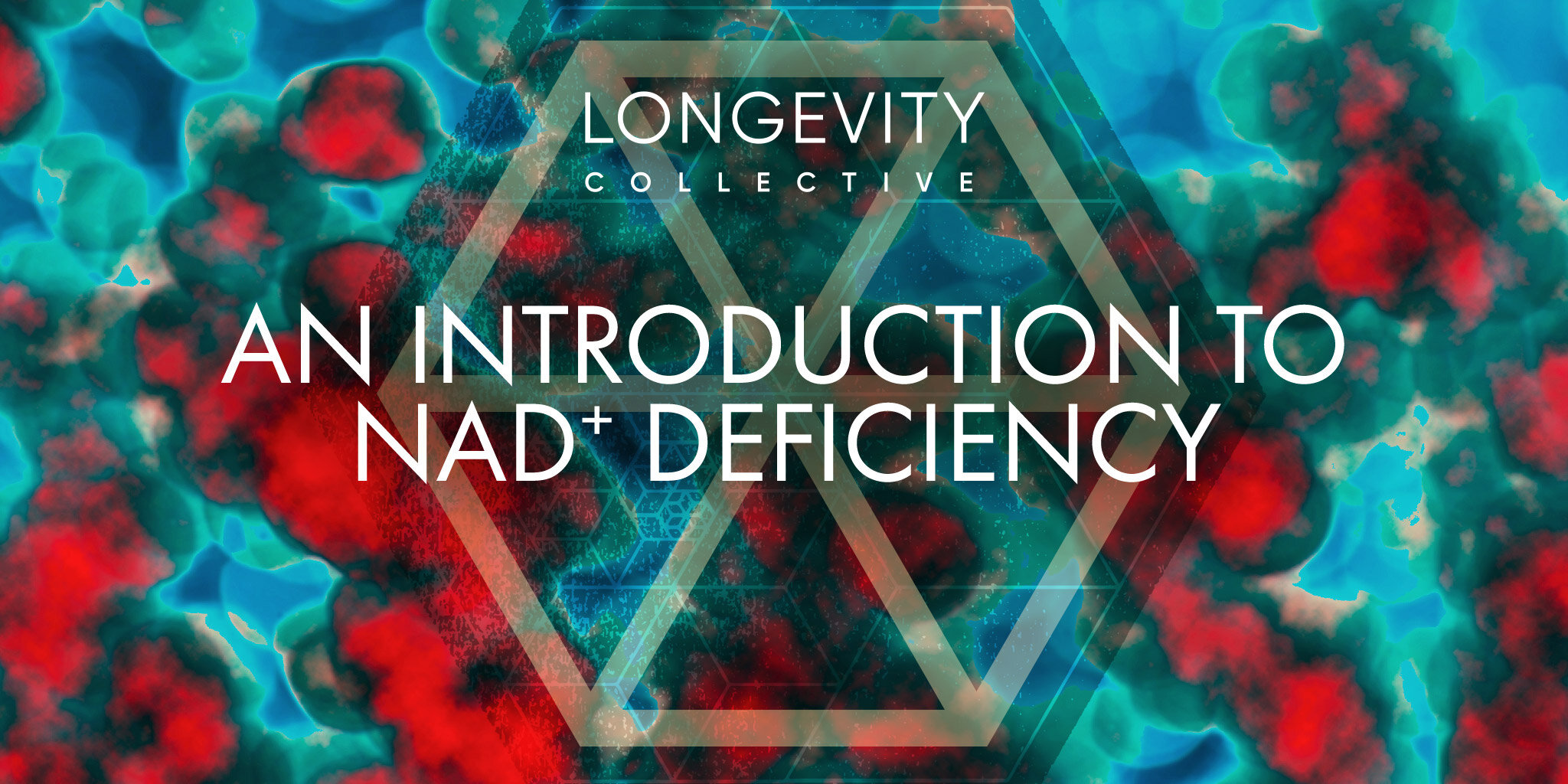An Introduction to NAD+ Deficiency
NAD+ is a naturally occurring component in the body that has a key role in hundreds of healthy metabolic processes. (1)
Nicotinamide adenine dinucleotide, commonly known as NAD+, is essential for energy production, DNA repair, gene expression, nutrient signalling, and immune system health, among numerous other processes.
Knowing that NAD+ has such an important role in human health, it is easy to imagine what might happen to our bodies if and when we become deficient in NAD+.
In this article, we give you an overview of NAD+ deficiency, how to know if you have it, whether you can test for it, and what you can do to prevent and treat it.
NAD+ deficiency is a state where the body cannot naturally biosynthesize enough NAD+ to freely carry out the processes in which it is involved. When the body becomes deficient in NAD+, DNA repair, energy production, or intracellular calcium signalling may occur more slowly or not at all.
In more general terms, NAD+ deficiency contributes to metabolic dysfunction, and eventually, cell aging. (2)
As of yet, there aren’t any population-wide studies that examine the prevalence of NAD+ deficiency in humans.
However, recent research sheds vital light on NAD+ deficiency and how it connects to illness and longevity, which can give us a better idea of how common it is.
As humans grow older, NAD+ concentrations naturally reduce, most likely due to defects in NAD+ biosynthesis and increased NAD+ depletion.
NAD+ deficiency is linked to some of the most common chronic diseases and neurodegenerative diseases and to a shortened lifespan and healthspan. (3,4)
Additionally, people with addictions tend to have very low NAD+ concentrations. (5)
Thus, it is safe to assume that NAD+ deficiency is a nearly universal phenomena in aging populations, and those that are living with chronic diseases, neurodegenerative diseases, and addictions.
Scientists and researchers have traditionally uses several methods to determine NAD+ deficiency in humans. Most of these methods are based on quantifying NAD or NADP (nicotinamide adenine dinucleotide phosphate) in different bodily cells and tissues. (6)
Until recently, however, these methods were not available commercially, and were reserved for the scientific research space. Today, through specialized clinics, you can measure your NAD+ levels and even your personalized NAD+ decay rate before and after treatment to ensure that the treatment was effective at raising NAD+ levels.
There are several lifestyle changes you can adopt to help reduce the speed at which the NAD+ in your body is depleted – namely regular exercise and a balanced diet rich in B vitamins and antioxidants. (7)
Some of the NAD+ precursors are nutrients that can be found in foods, namely forms of the B-vitamin niacin. Eating foods rich in niacin may contribute to maintaining or slowing NAD+ concentration reduction, but there is limited evidence to demonstrate the connection between NAD+ depletion and diet without supplementation.
Based on the research, the most effective way to prevent NAD+ depletion and treat deficiency by restoring NAD+ concentrations is through supplementation with NAD+ precursors and NAD+ itself. In fact, research shows that supplementation not only restored NAD+ concentrations in people with NAD+ deficiencies, but it can also help to prevent the health effects associated with reduced NAD+ concentrations, including neurodegenerative diseases.
Some of the most common forms of NAD+ supplementation include IV administration, patches, sublingual tablets, and pills. You can read more about NAD+ supplementation, its benefits, and the different forms here.
NAD+ deficiency is extremely common. This is because is low NAD+ concentrations are linked to aging and disease, which are far too common today in age. While some improvements in NAD+ depletion rates may be observed with a balanced, nutrient-rich diet, regular exercise, and adequate rest, these measures are likely not enough to supplant the rate at which NAD+ is lost over time.
The good news is that a growing body of research points to the benefits of supplementing with NAD+ and its precursors for preventing NAD+ concentration loss and reversing NAD+ deficiencies. Additionally, new testing methods allow you to see your baseline NAD+ levels, the rate of NAD+ depletion, and the effects of NAD+ supplementations on your body.
Do you want to learn more about NAD+ concentrations and deficiency? Check out the science section of our website.
Braidy, N., Berg, J., Clement, J., Khorshidi, F., Poljak, A., & Jayasena, T. et al. (2019). Role of Nicotinamide Adenine Dinucleotide and Related Precursors as Therapeutic Targets for Age-Related Degenerative Diseases: Rationale, Biochemistry, Pharmacokinetics, and Outcomes. Antioxidants & Redox Signaling, 30(2), 251-294. https://doi.org/10.1089/ars.2017.7269
Imai, S. (2009). The NAD World: A New Systemic Regulatory Network for Metabolism and Aging—Sirt1, Systemic NAD Biosynthesis, and Their Importance. Cell Biochemistry And Biophysics, 53(2), 65-74. https://doi.org/10.1007/s12013-008-9041-4
Zapata‐Pérez, R., Wanders, R., Karnebeek, C., & Houtkooper, R. (2021). NAD + homeostasis in human health and disease. EMBO Molecular Medicine, 13(7). https://doi.org/10.15252/emmm.202113943
Poljsak, B., & Milisav, I. (2016). NAD+ as the Link Between Oxidative Stress, Inflammation, Caloric Restriction, Exercise, DNA Repair, Longevity, and Health Span. Rejuvenation Research, 19(5), 406-413. https://doi.org/10.1089/rej.2015.1767
Braidy, N., Villalva, M., & Eeden, S. (2020). Sobriety and Satiety: Is NAD+ the Answer?. Antioxidants, 9(5), 425. https://doi.org/10.3390/antiox9050425
Biotek Instruments. (2021). Determination of NADH or NADPH Concentrations with the FL600™ Fluorescence Microplate Reader using Fluorescence or Absorbance Modes. Biotek.com. Retrieved 3 March 2021, from https://www.biotek.com/resources/docs/FL600_Determining_NADH_&_NADPH_Concentrations.pdf.
Viljoen, M., Swanepoel, A., & Bipath, P. (2015). Antidepressants may lead to a decrease in niacin and NAD in patients with poor dietary intake. Medical Hypotheses, 84(3), 178-182. https://doi.org/10.1016/j.mehy.2014.12.017
Imai, S., & Guarente, L. (2014). NAD+ and sirtuins in aging and disease. Trends In Cell Biology, 24(8), 464-471. https://doi.org/10.1016/j.tcb.2014.04.002


